Disassembly and radiator details
Removing the upper hee cover requires some suitable tools. With a small Torx screwdriver (T5), the six small swivels that hold this cover can be turned out. After that, the interior with the actual cooler and the large mounting or Cooling frame free.

AMD is again relying on the Direct Heat Exhaust (DHE) principle for this card, which does not have to be a disadvantage. We see the radial fan in the suction chamber and the path of the air, longitudinally through the block of the chamber cooler up to the slot panel.
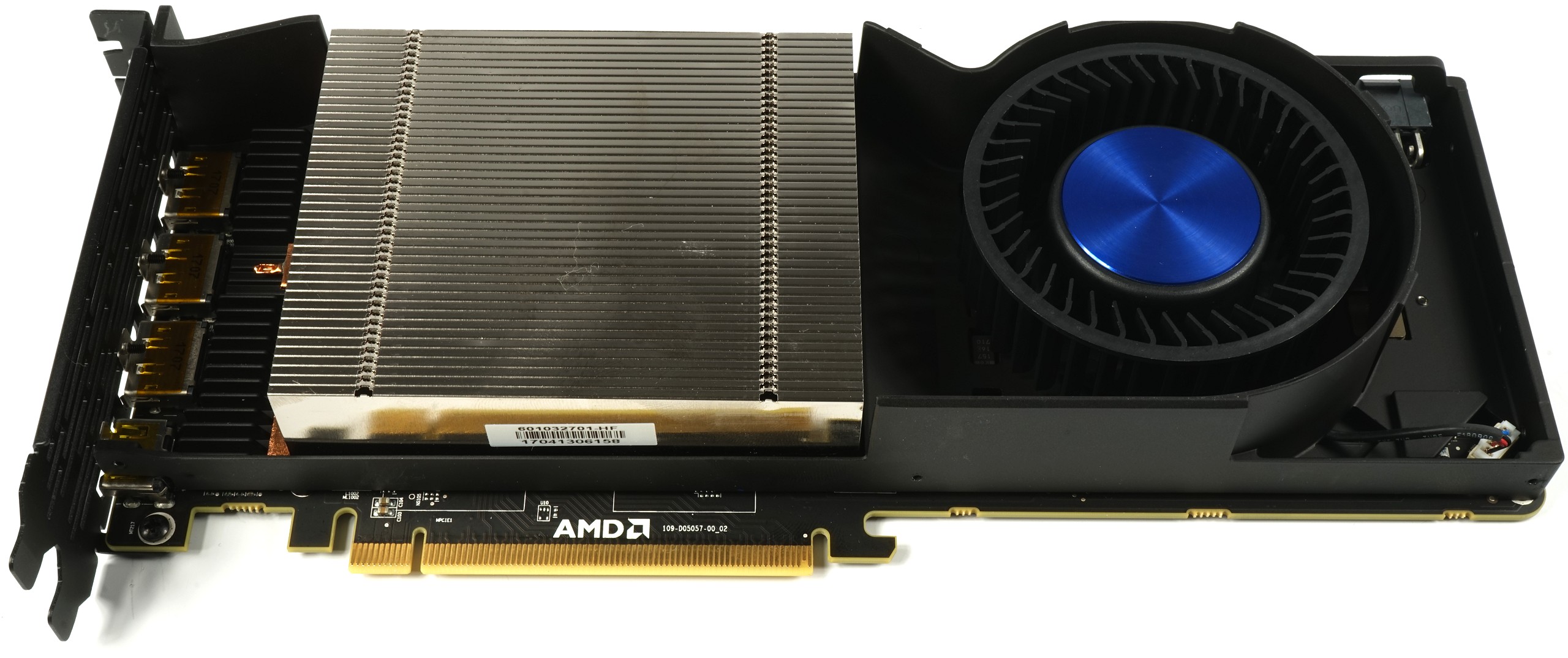 |
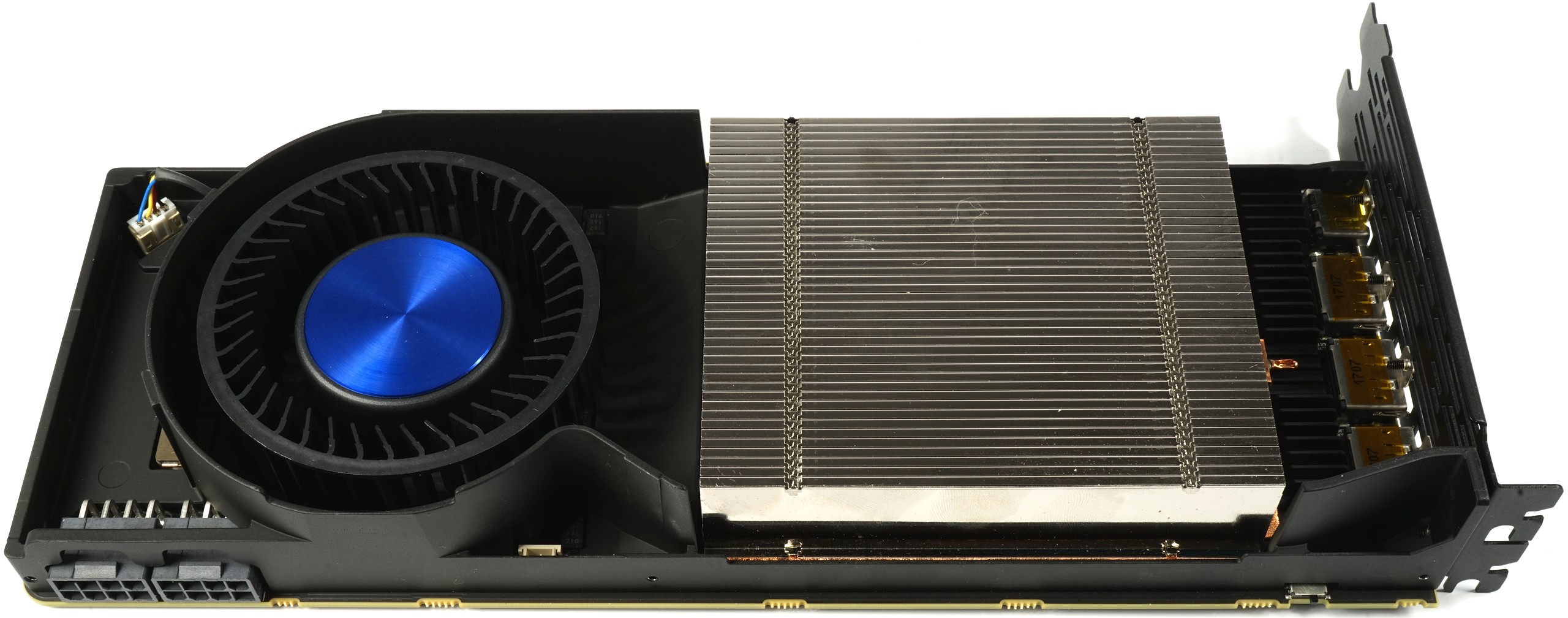 |
The backplate made of blue anodized aluminium, which is fastened with six T6 screws, has only an optical function, because it does not contribute to cooling. Attempts to dissipate additional heat using thermal lyre pads yielded hardly measurable results except for slightly cooler doubler chips.

On the top of the board sits the massive mounting or Cooling frame, which on the one hand holds the entire structure together and on the other hand also represents an important cooling element. The design has learned, because similar to Gigabyte (Aorus) on the GTX 1080 Ti Xtreme Edition, you also rely on relatively well thermally conductive coil housings, which are also cooled by thermal lyre pads, similar to the VRM of the voltage converters. even the appropriate recesses. We will see later that this works well.
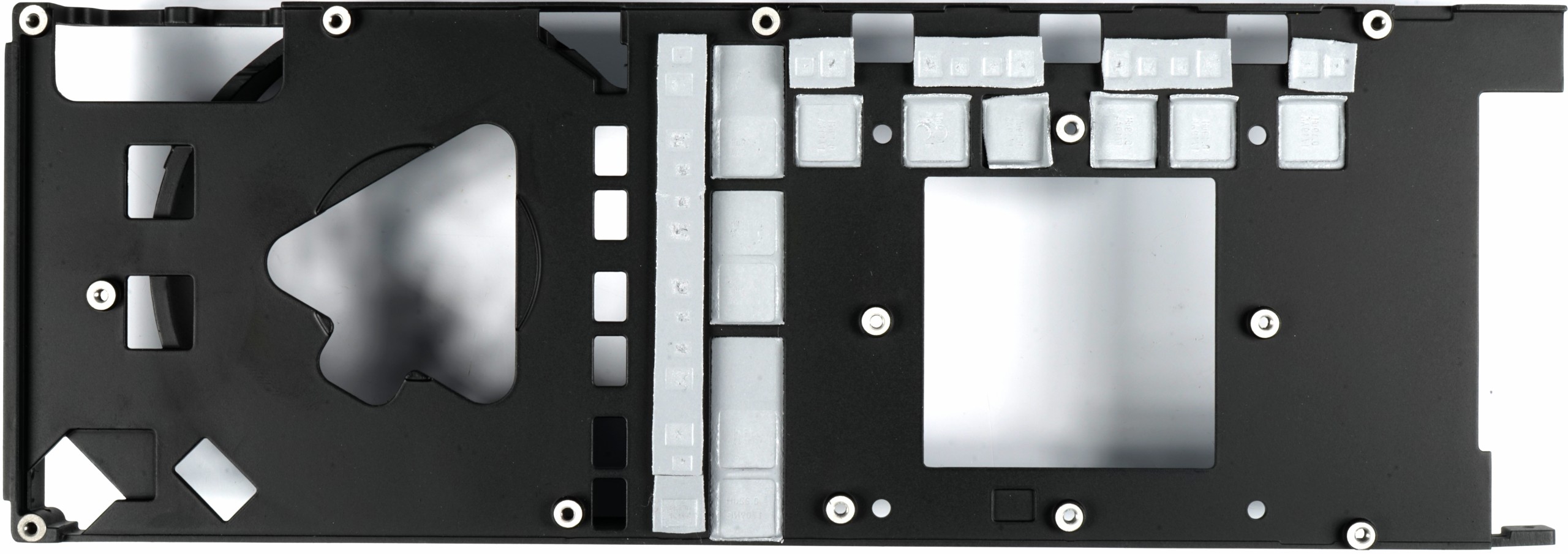 |
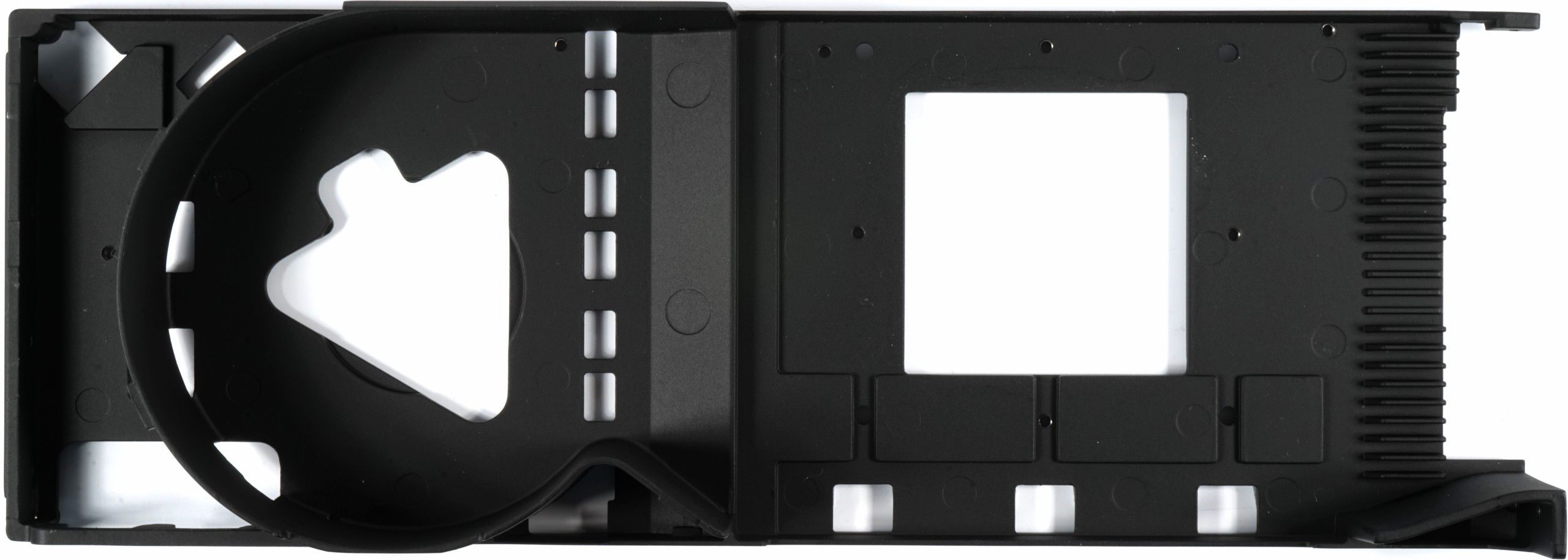 |
The actual chamber heat sink as a thin aluminium fin sits on a large vapor chamber made of copper. One sees the soldered outlet of the one-piece hybrid vapor-chamber (One Piece), which one must not bend down. The moulded heat sink is adapted to the package in size
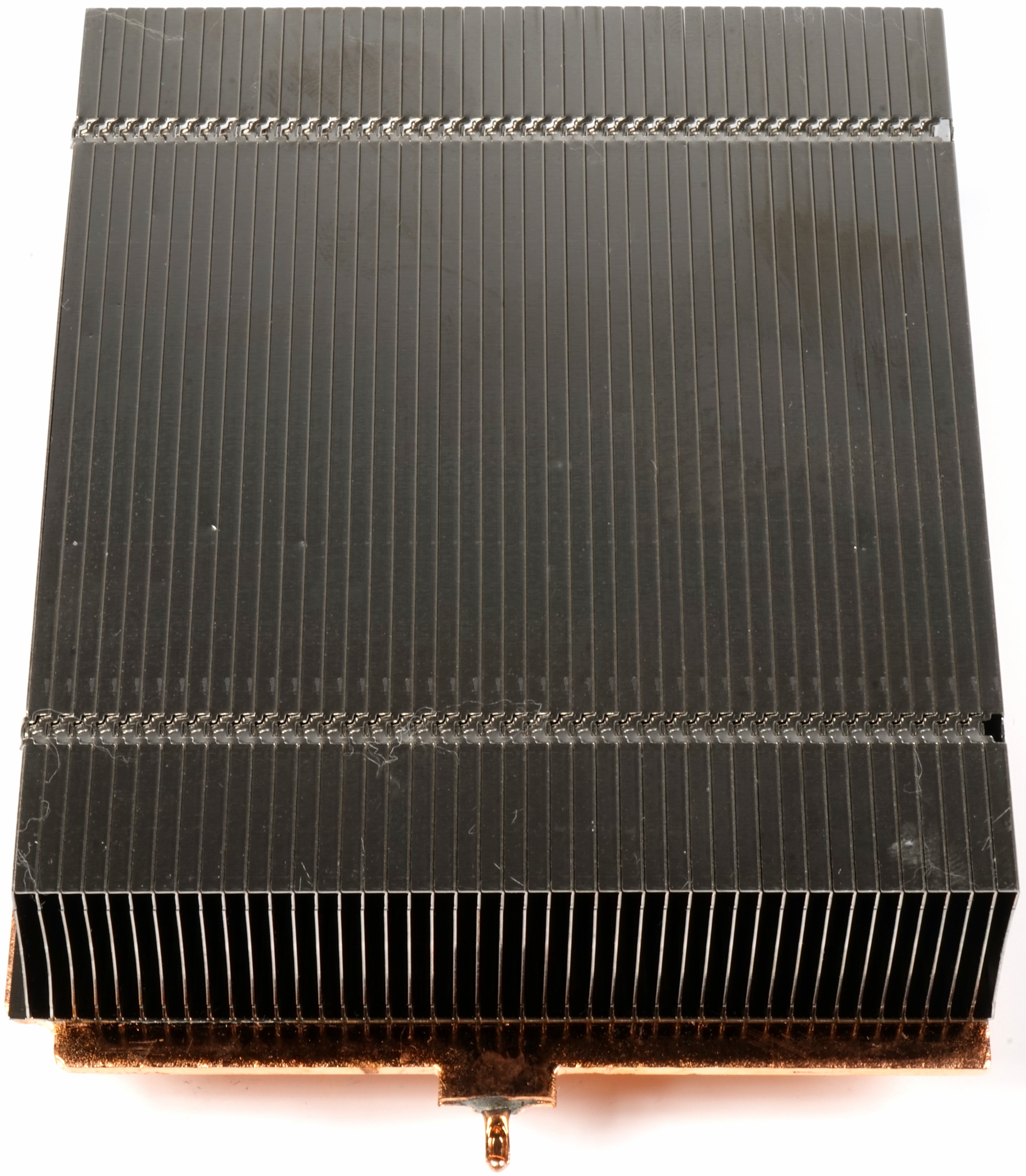 |
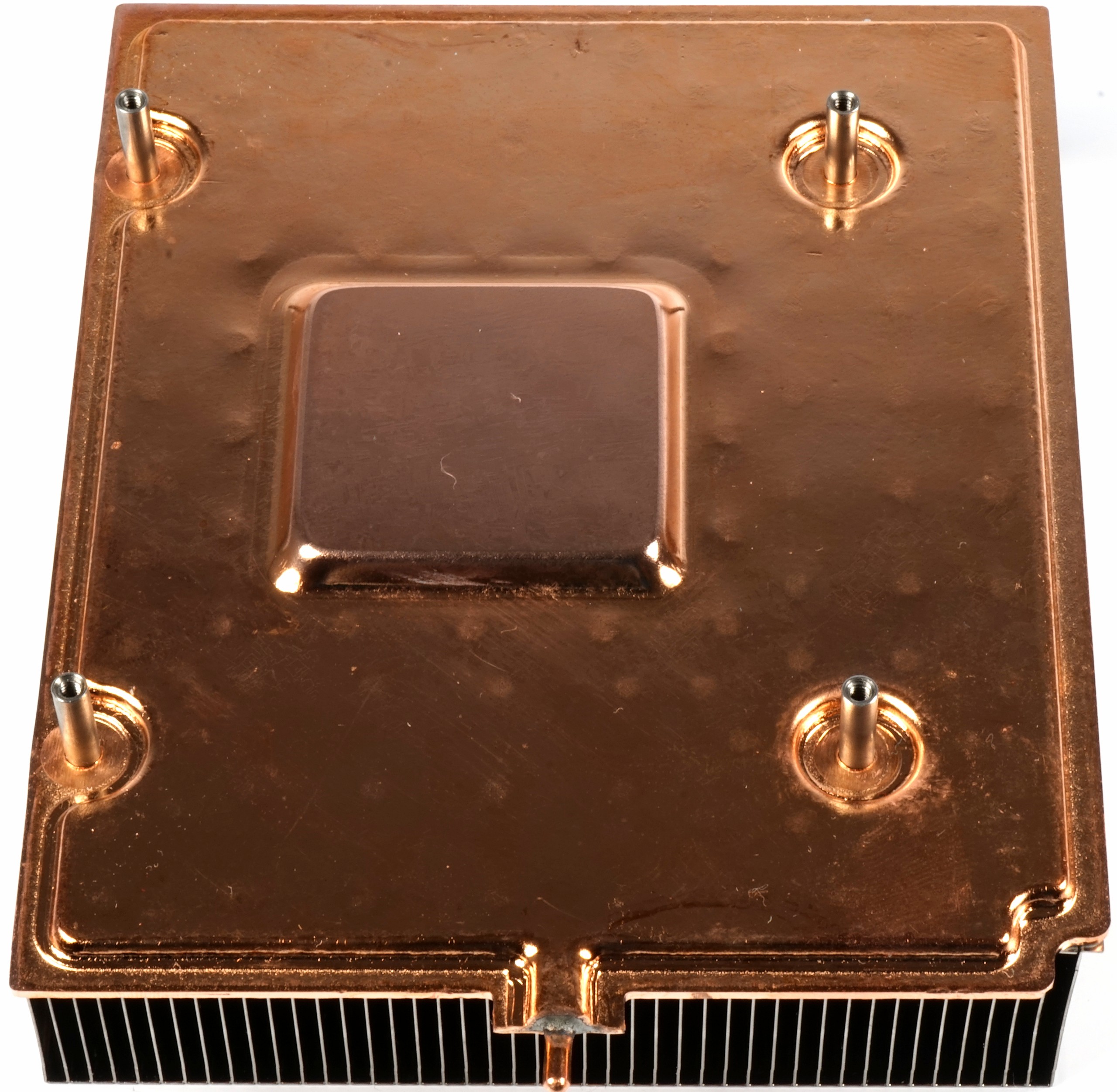 |
For the 7cm radial fan, AMD is relying for the first time on a single ball-bearing model from Delta and not one of the snarling and far too loud examples of the reference predecessor models. Compared to the previously up to 10,000 rpm, the extra-strong fan of the BVB1012 series only rotates up to a maximum of 5,000 rpm. AMD sets the fan target to approx. 40% to 41%, which is then equivalent to about 2,000 rpm. We'll see that the sound characteristics are now more like what Nvidia can offer on their Founders Edition.
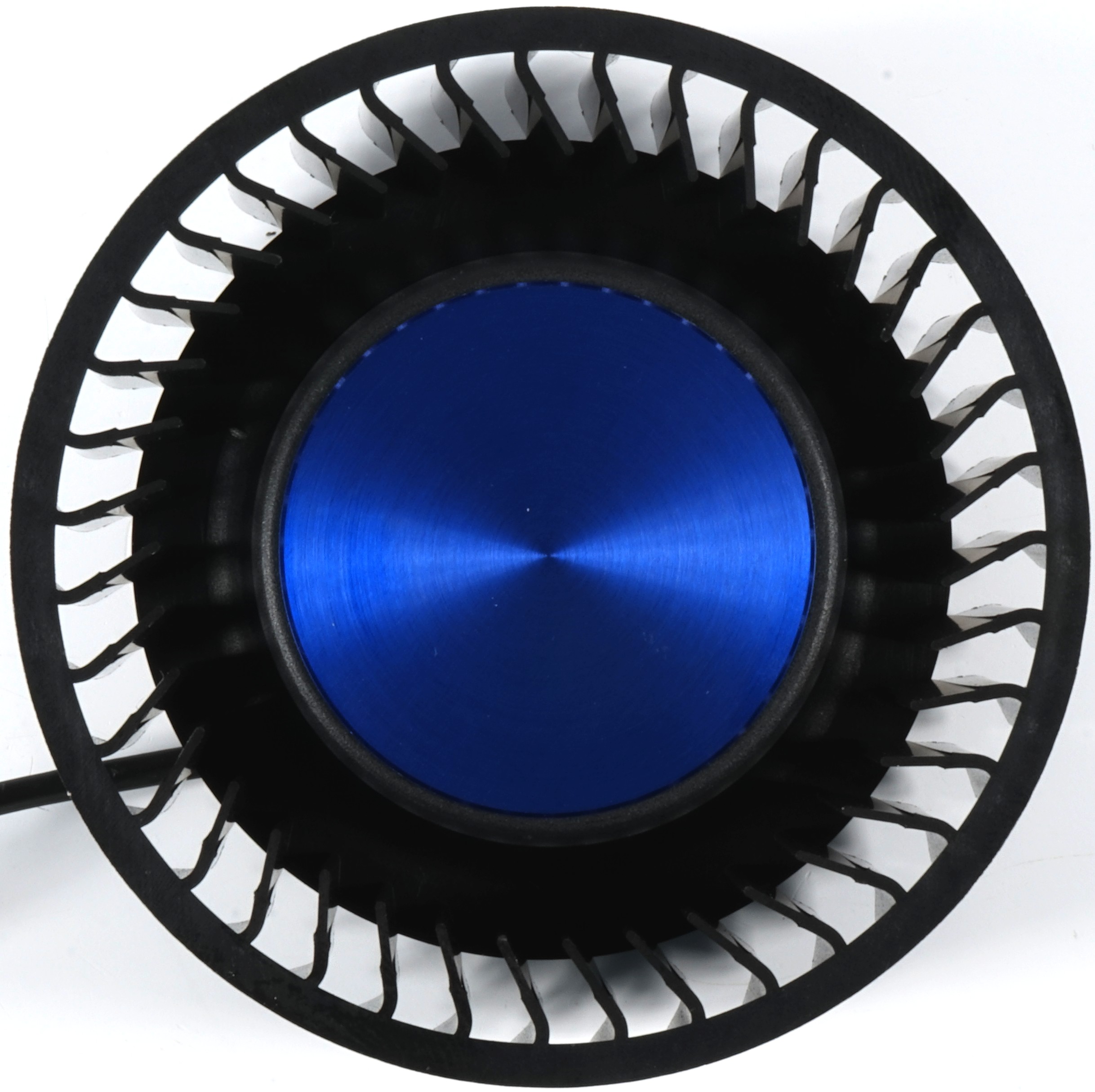 |
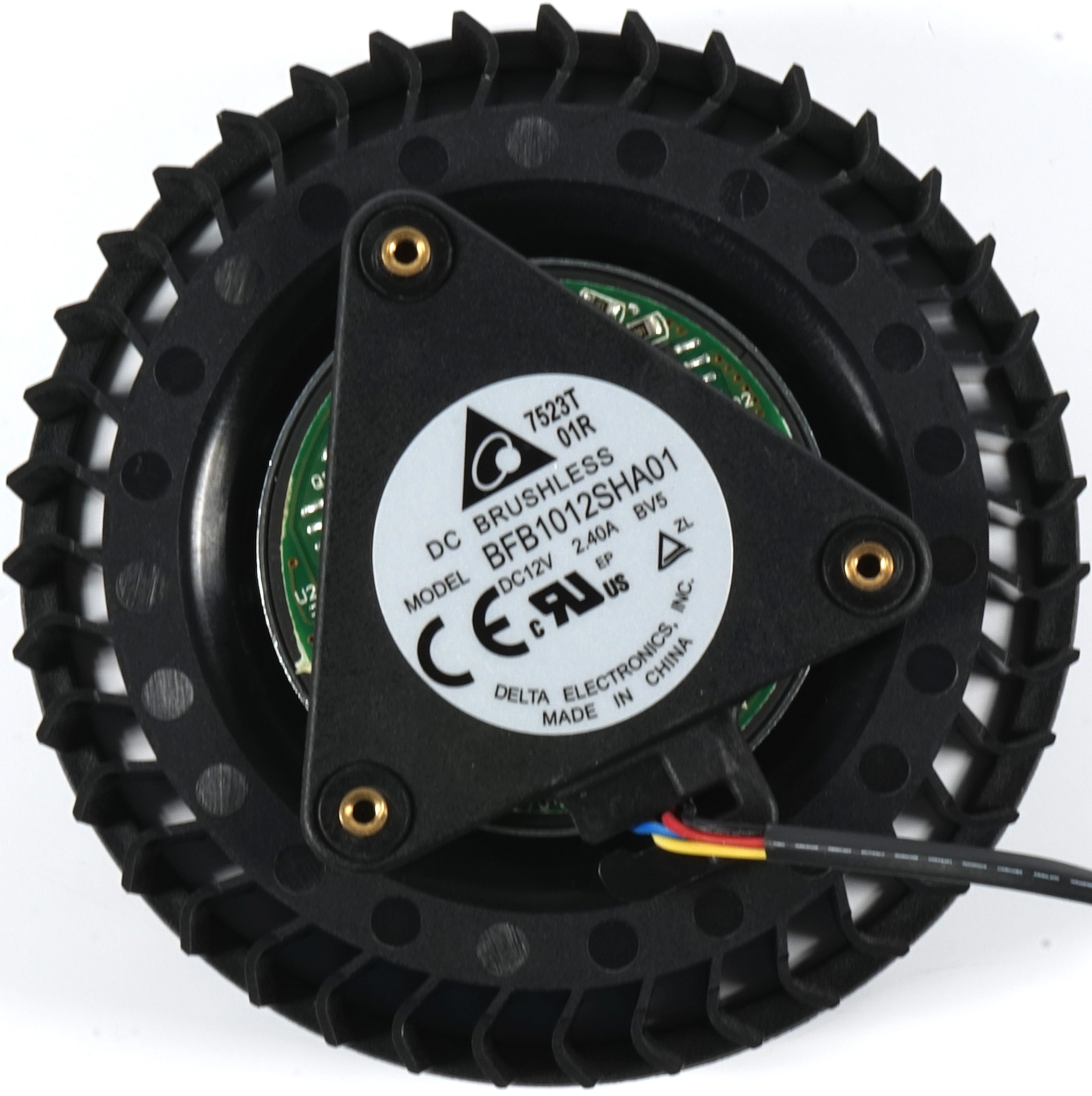 |
The completely exposed board shows on the front as the dominant element the package with the large interposer, which we will talk about in a while. The exact board analysis can then be found in the next chapter
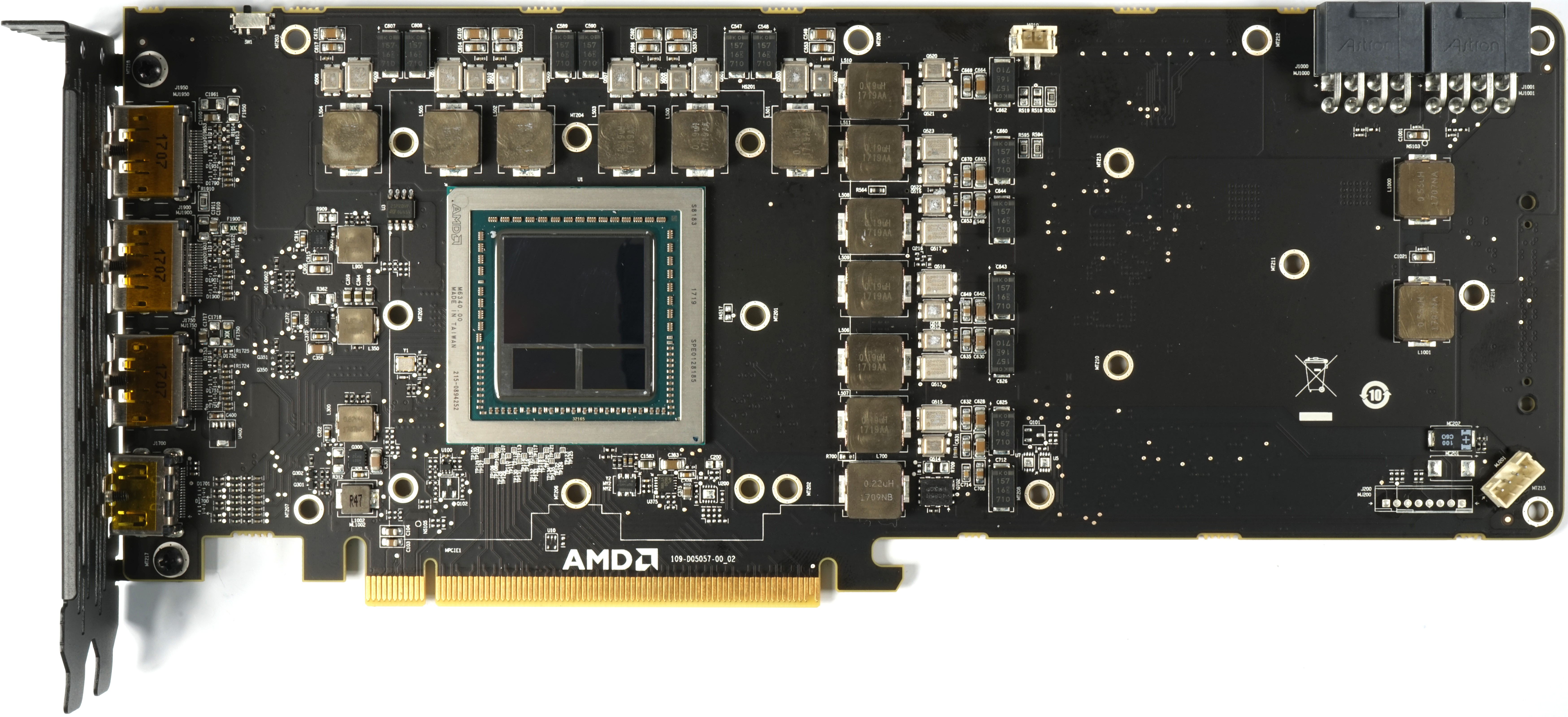 |
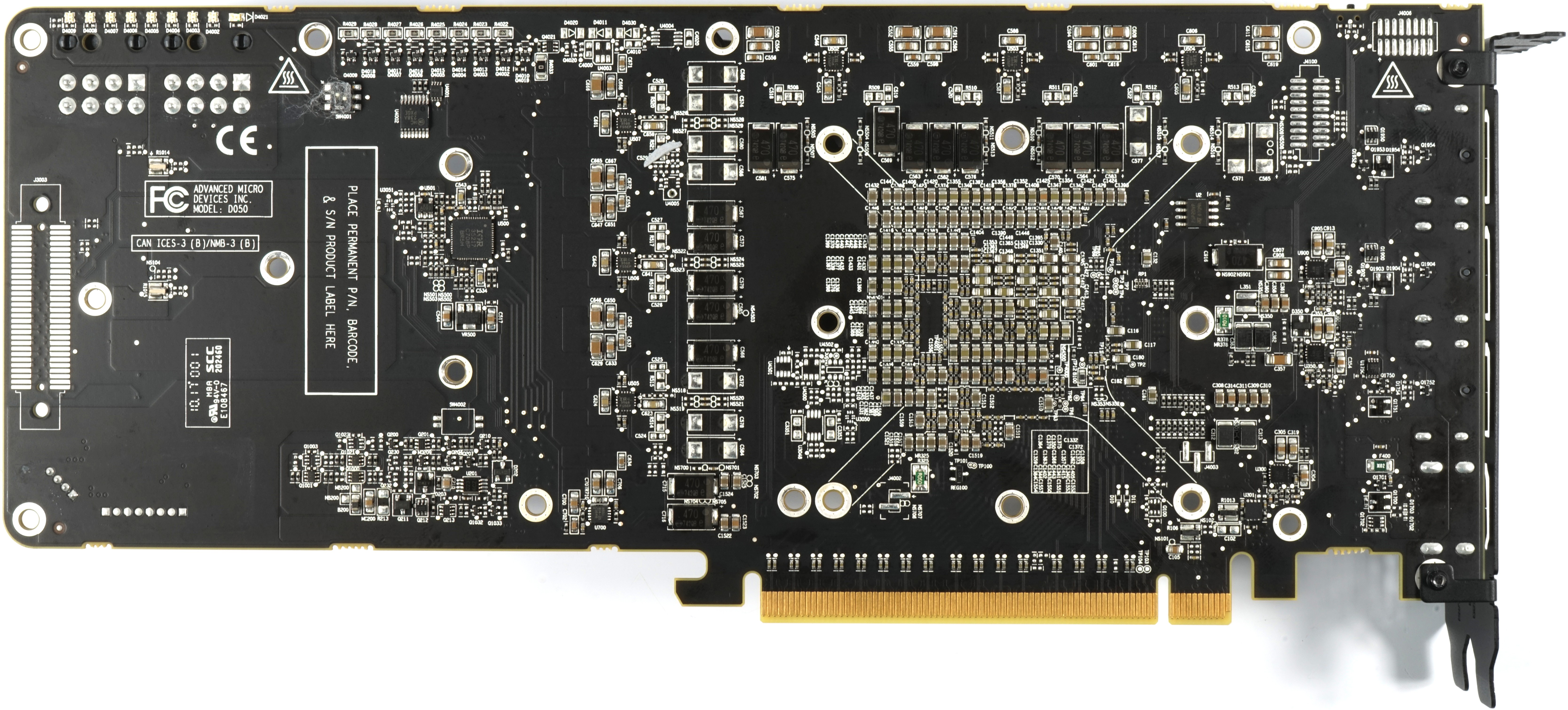 |
The package: GPU and memory on the interposer
Since the GPU (and in this case also the interposer with GPU and memory) cannot be soldered so easily onto the PCB, these components are first used by one of the specialized finishers (e.g. ASE) on a so-called package ("packaging process"), which can later be processed much more easily in the factories. To do this, it is important to know that these packages are fed by machine from a roll on a transfer tape in the SMT process and then positioned on the PCB
First, let's compare the package as it was initially used on AMD's internal slides and demonstrations. We can see that there are deeper gaps between the GPU and the two memory modules, as in Fiji, respectively. these components are relatively high. The interposer, on the other hand, is extremely thin and, above all, fragile. Hence the warning to the internal lyre to take care of the removal of old thermal paste during the development phase.

For a machine production, such a thing is of course quite risky, especially since one can also encounter so-called "underfill" problems, since in packaging also pressure-sensitive cavities can always form between the interposer and the intermediate board. However, if you look at the package currently used at the Vega FE, you can clearly see that AMD is relying on the so-called molding. The area around GPU and memory has been poured over a large area with a suitable material, which significantly increases stability.
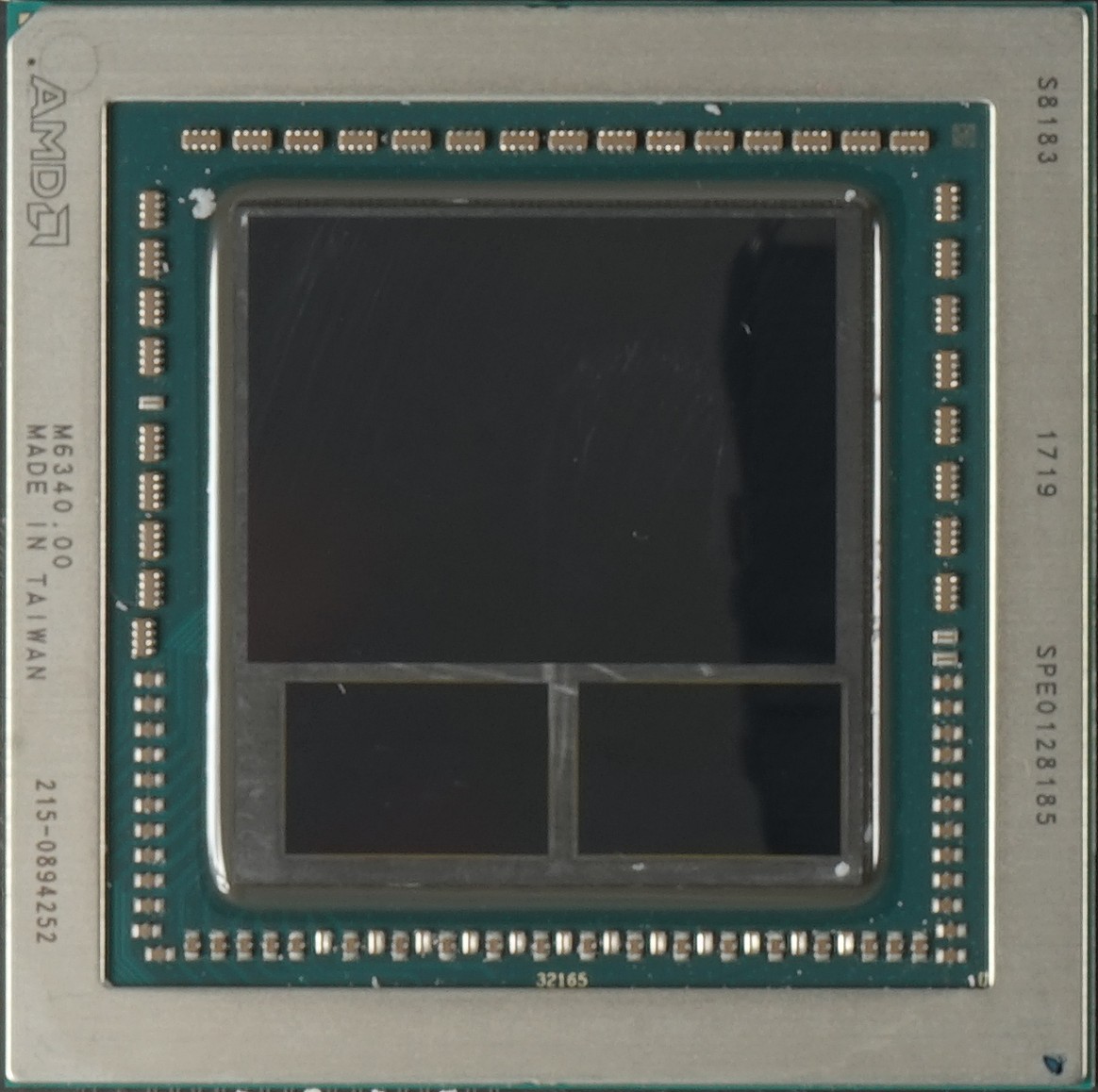
This should not be a carte blanche for eager cleaning devils and pushers, but the adrenaline level is likely to be significantly lower when changing the radiator.
- 1 - Einführung und Übersicht
- 2 - Details zu Architektur und HBM2-Speicher
- 3 - Demontage, Kühler und Interposer-Details
- 4 - Platinendesign und Detailinformationen
- 5 - Benchmark-Intro, 2D-Troughput und -Performance
- 6 - 3D Workstation- und Design-Benchmarks
- 7 - Gaming-Performance: DirectX 11
- 8 - Gaming-Performance: DirectX12
- 9 - Gaming-Performance: Vulkan/OpenGL 4.5
- 10 - Leistungsaufnahme im Detail
- 11 - Takt, Temperaturen und Geräuschemission
- 12 - Zusammenfassung und Fazit
















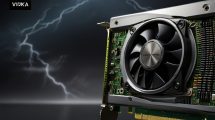














Kommentieren